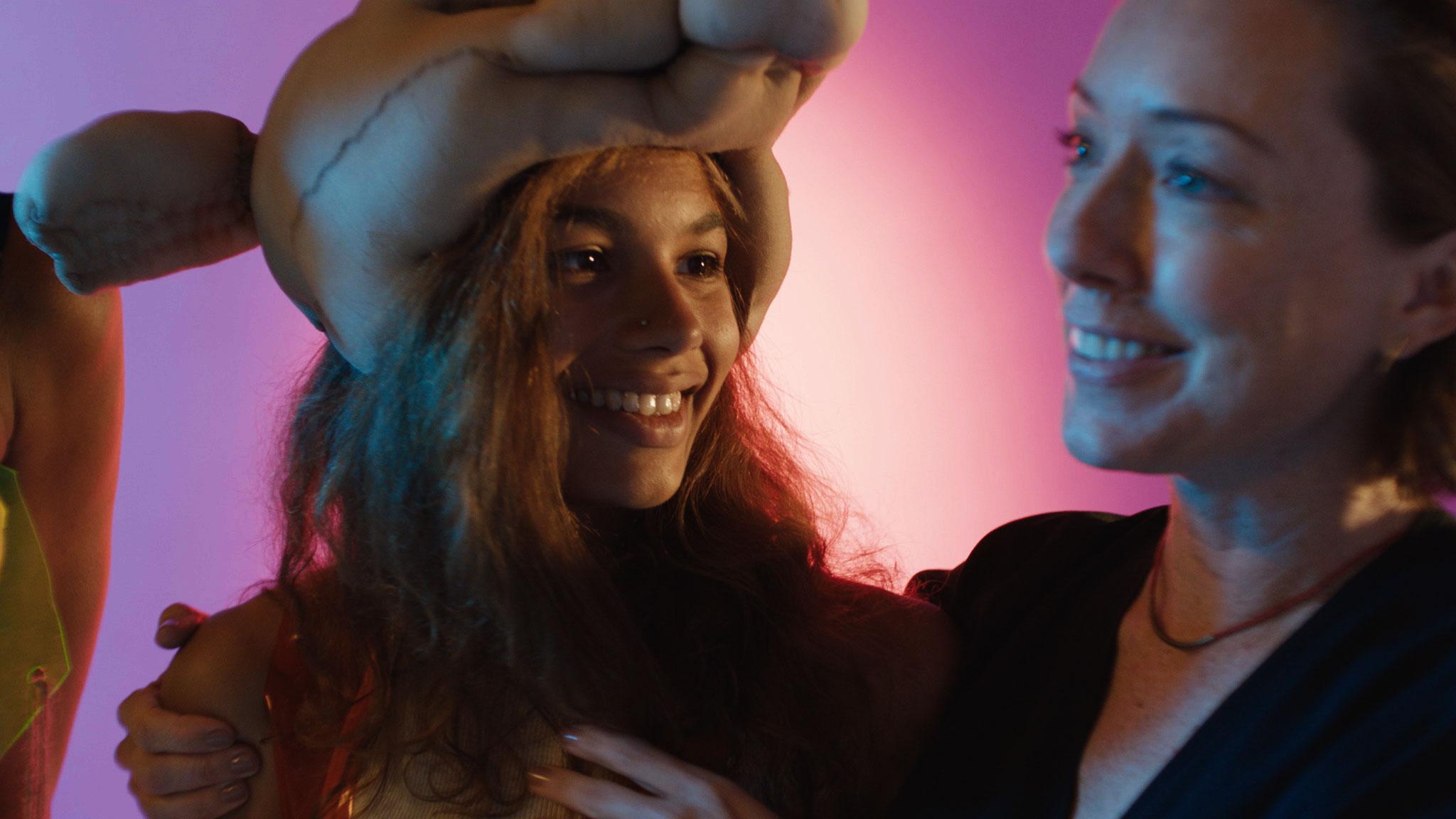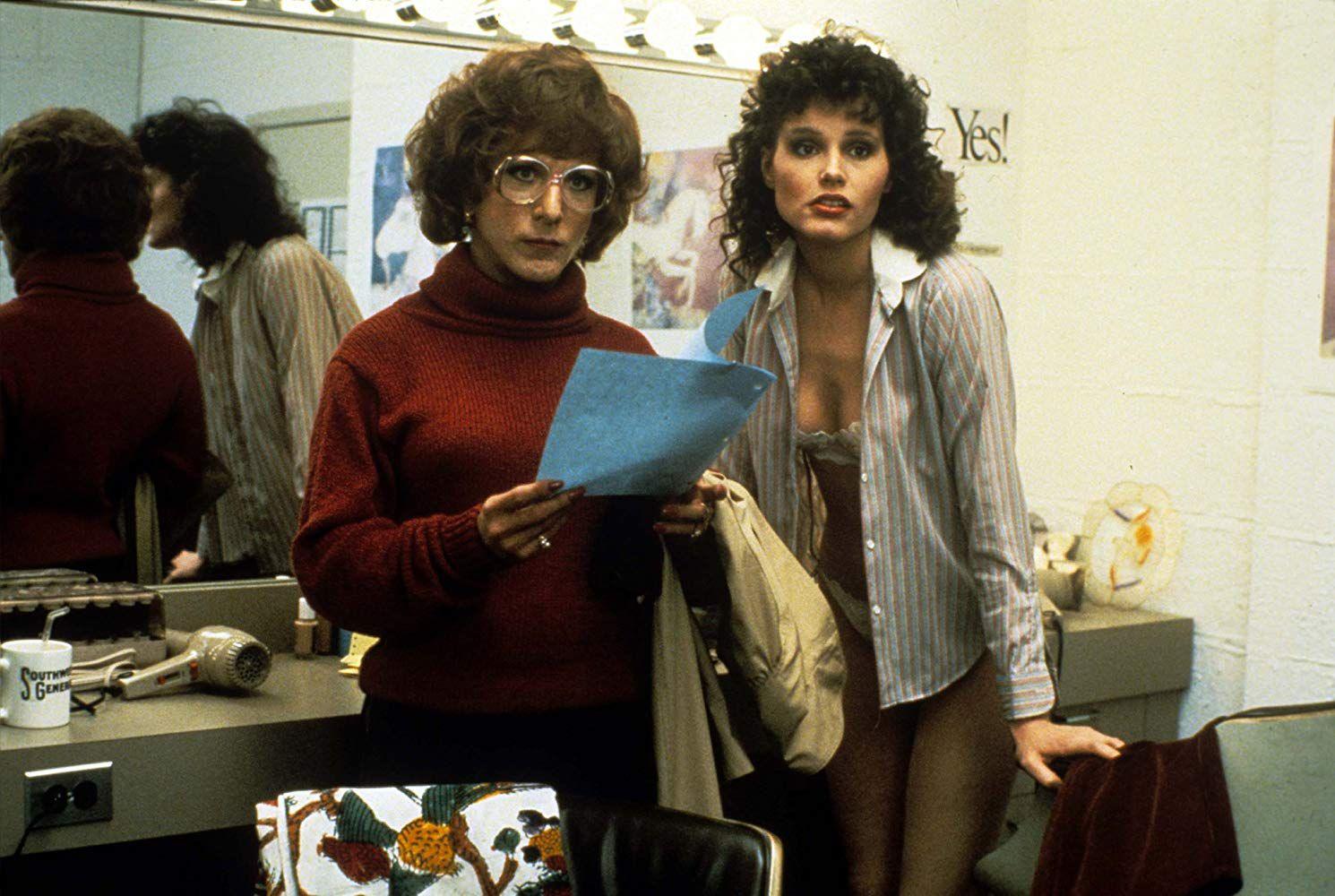All Life’s a Performance: ‘Madeline’s Madeline’ Is One of the Most Revealing Movies About Acting Ever Made
Filmmaker Josephine Decker’s vibrant new film, which depicts a young woman battling the world and discovering herself in an acting class, recalls the complicated acting heroes of ‘Barry’ and ‘Tootsie’
Fictional films function on the idea of suspension of disbelief, meaning that the filmmaking must help the spectator believe, temporarily, in the veracity of what they are seeing, however fabricated or even fantastical. Actors, naturally, play a big part in this trickery: They become different people, hopefully as seamlessly as possible, to help tell these stories. But that process in itself is a good story to tell. Josephine Decker’s Madeline’s Madeline, opening Friday, does just that and more, as it follows the acting training that a 16-year-old girl, Madeline (Helena Howard, a revelation), experiences with a theater troupe in New York City. Yet Decker’s film is not the only recent example of this quasi-meta exploration of the acting craft by filmmakers: Bill Hader’s TV show Barry sees Hader himself play the titular character, a hitman who one day stumbles into an acting class and decides that the time has come for a career change. In slightly more distant history, Sydney Pollack’s 1982 film Tootsie focused on Michael, a male actor played by Dustin Hoffman, who goes very far (too far) to act as a woman for a role after exhausting more conventional casting options. If all these explorations of the actor’s work share similar concerns, Decker’s film is particularly honest, often to shocking effect, about what is at stake when an actor plays with his instrument (himself) and when a director uses that instrument for his (or her) own purposes.
“I’ve worked in documentary for a while, and then I acted a little bit in films, and I’ve always been very interested in the actor as a collaborator, as a writing collaborator,” Decker told me over the phone. It makes sense that she herself should be an actress, bringing her own understanding of the craft to her directing. Hader and Pollack, as well, were actors first, with Pollack even teaching the Meisner technique of acting after learning it from Sanford Meisner himself. This firsthand experience of the thespian mind-set informed Decker’s approach: “Usually, when I take acting classes, I see them as directing classes. I take them to become a better director and a better communicator with actors,” she explained. For Madeline’s Madeline, she enrolled in an intensive summer program to work with the method of devised theater, where actors create pieces from improvisations and intensive rehearsals. Madeline’s Madeline depicts one such troupe, but Decker also created her own highly collaborative space to make the script for the film, working with up to 12 actors from the fall of 2014 to the spring of 2015.
“[Acting connects you] to this other kind of deeper humanity,” Decker said. “Beyond technology and beyond language, there’s this kind of beautiful, physical, intimate connection that you can have with other people, even people that you don’t know that well. I think that’s kind of what a lot of [acting] classes are designed to do, to very quickly develop intimacy.” In Madeline’s Madeline, Decker discreetly reveals how natural and safe the closeness among the troupe is, as the actors express themselves through strange, impulsive movements and abnormal sounds, but never judge each other. Madeline also starts opening up about her life to her teacher Evangeline (Molly Parker), and their mother-daughter relationship starts off seemingly from a healthy, nurturing place. Barry Block in Barry finds himself overwhelmed by the intimacy of acting, and his classmates connect deeply with him despite not knowing anything about him—or rather, in this very particular case, because they know nothing of his private life as a contract killer. Tootsie may not take acting as seriously, focusing more on the economic struggle that often goes hand in hand with the profession, yet the intimacy that Michael-as-Dorothy develops with his costar Julie (Jessica Lange) on the shoot of their soap Southwest General is immediate. If at first this closeness is the source of jokes (“What kind of mother would I be if I didn’t give my girls tits … tips?” slips Dorothy), it progressively becomes more genuine as Michael forgets himself and lets Dorothy take over and be protective of Julie, like a girlfriend or mother figure would.

In a famous (or now infamous, after recent allegations of sexual harassment against him) interview with the American Film Institute, Dustin Hoffman explained with tears running down his cheeks that makeup tests revealing that Dorothy could never be a conventionally beautiful woman made him realize how biased he had been toward women all his life, speaking only to the pretty ones and rarely to the Dorothys of this world, however interesting they may have been. As writer and director Luis De Filippis remarked in a recent Toronto International Film Festival roundtable about the film, Hoffman’s comments were “really … just him saying ‘Look at all the opportunities I missed out on.’” Yet this newfound self-awareness, however limited and self-serving, is what acting can uncover. In Barry, the eye-opening powers of theater are perhaps a little exaggerated: It shouldn’t take acting classes for someone to realize that possessing the emotional register to kill people in cold blood is unhealthy. Where the show gets more serious and poignant is in how it reveals the extent of Barry’s post-traumatic stress after his service in Afghanistan, and in his discovery that he is, in fact, capable of interpersonal relationships—he simply needs the safe space of a class to operate free of judgment and expectations.
The devised theater classes Decker took that summer were particularly revelatory: “For three weeks, you’re all together for eight or 10 hours a day and you just watch people kind of crack up, and you’re like, ‘Oh, I don’t even know if you knew that part of yourself existed,’” she said. “I got really interested in how performance can lead you to a more authentic self.” For Madeline, this training occurs when she is only 16, and her coming of age is channeled through her work: She excels at becoming a cat, but her pubescent sexuality also finds its way through her feline movements, which Decker doesn’t shy away from.
I was thinking more about looking at what happens when you push yourself very, very far in terms of letting yourself become someone else and something else, and how that essentially can be exploited.Josephine Decker
“[Acting] teaches you that there’s so much more possibility available to you in your whole life,” she said, and Madeline also finds in her classes a freedom she doesn’t have at home. Her overbearing mother, Regina (Miranda July), stifles her self-expression and self-discovery, and her anxiety about Madeline’s mental health only fires up the teenager’s rebelliousness. Acting lets Madeline express all her anger about her family as well as her desire for freedom: In class, she also works at becoming a sea turtle, tirelessly shuffling toward the sea to discover the world.
“I was thinking more about looking at what happens when you push yourself very, very far in terms of letting yourself become someone else and something else, and how that essentially can be exploited,” Decker said. The temptation to use an actor’s personal life is great, for acting is best when it looks as real as possible. Decker’s background in documentary made her particularly interested in the ethical risks of taking on real people’s lives and putting them into art. What Madeline thought was a safe space to be open about her often ugly feelings toward her own mother progressively turns into a sort of factory where her personal experiences are carelessly harvested by Evangeline for her own play. This exploitation happens when collaboration is too imbalanced and actors don’t get to express themselves freely. “[What] my relationship with Helena … taught me is how to be very honest about moments of discomfort that you share with your collaborators,” Decker said. “How to not hold back from having the very difficult conversations … to make sure that we touch on what was unsafe so that we can create what is safe.”
This is one reason why watching Tootsie today is particularly uncomfortable. When Michael confesses his trickery to Julie, she accepts his apology swiftly, even though he had been using Dorothy’s friendship to get closer to her. On the other hand, Dustin Hoffman convinced Sydney Pollack to play his agent George Fields in the film because their arguments in real life had the energy that the pairing of Michael and George needed: There was real collaboration on that front, with both actors choosing to use their real-life dynamic for their art.
“I also learned over the course of working together that, even just the fact of me being the director of that space, and having final say over what we got to make, already skews the collaboration in a certain way,” Decker said. Despite this unavoidable limitation, Decker’s attention to the actor’s process and the interiority of acting still reverberates throughout her film, with her visual style attuned to Madeline’s experience. “I realized quite early on that I was interested in the subjectivity of The Diving Bell and the Butterfly,” Julian Schnabel’s 2007 film about the true story of a man paralyzed after a stroke and his perception of the world through his one healthy eye. Darren Aronofsky’s dynamic filmmaking also influenced the way Decker decided to make us feel that we are Madeline.
But the greatest formal inspiration was, again, real life. “Honestly,” she said, “a lot of the influence for the style of the filmmaking came from just doing acting training myself, and feeling like there are these moments when you are yourself performing, and then these moments when you leave yourself and you go somewhere else, and you become something else.” The bold camera movement and editing style in the opening scene makes Madeline almost literally transform into a sea turtle. Throughout the film, the palpable lighting on faces in close-ups translates how “[such] moments are exciting and also a little scary.” Bill Hader didn’t go as far stylistically on Barry, but perhaps his own acting experience also informed his images. As in Decker’s film, Barry’s best moments evoke the sensations of escape and connection that acting can offer: Slow motion and close-ups bring out the intensity of the bond that Barry builds with his classmates, and comes in stark contrast with the cold distance and robotic stasis of his murders. Cinematic images prove an apt medium for the expression of the very particular, almost ungraspable emotions that an actor goes through.
On Madeline’s Madeline, collaboration extended to the entire crew and transpired not only in the actors’ performances, but in the very look of the film. Director of photography Ashley Connor (who also delicately shot Dustin Guy Defa’s Person to Person last year) was present for the entire rehearsal-and-writing period, taking part in exercises herself. “We were very much interested in immersion, immersion, immersion, immersion,” insisted Decker, and the result is one of the most generous and absorbing films about not only the acting process, but also the director’s work.
Discomfort is as inherent to acting as it is to artistic collaboration, and Madeline’s Madeline, through Helena Howard’s gifted central performance and its vivid images, is a manifesto for the need to allow for difficult conversations. Teri Garr famously complained about the sexist conditions during the production of Tootsie, saying of Pollack that “he just wanted the beautiful, blond, cute, shiksa girls to be nice and shut the fuck up!” It probably isn’t a coincidence that this film’s politics look particularly bad in our post-#MeToo era. Madeline’s Madeline makes the reasonable claim, both on and offscreen, that the only way to show the truth is with open-hearted dialogue.